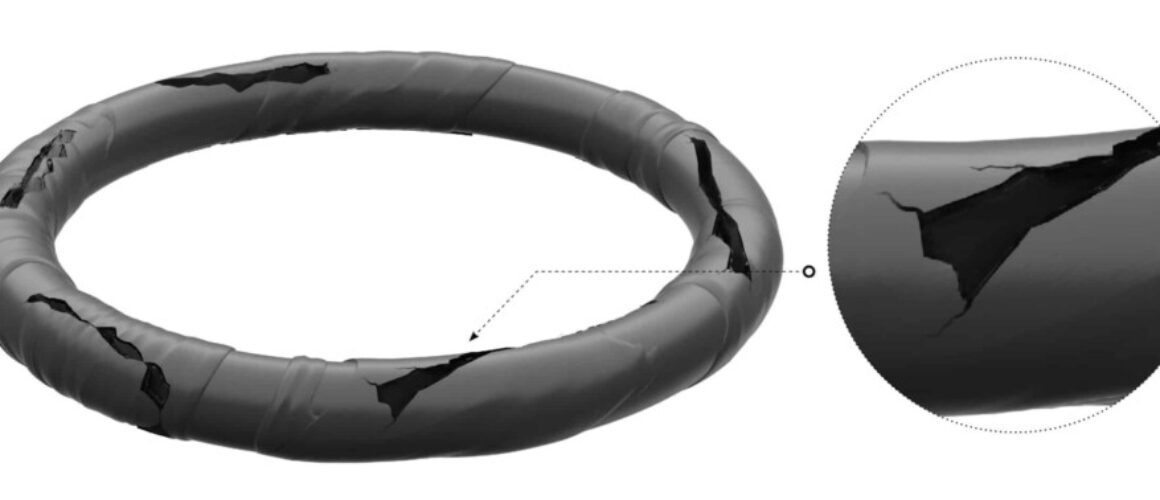Why Do O-Rings Fail?
To define simply, o-rings are simple yet critical components in the shape of ‘o’ that are used to create a seal between two surfaces to prevent leakages.
However, like any mechanical component, they can fail at times for various reasons. It’s very important for users to understand this because knowing the cause makes it easier to change the design/seal material to ensure its longevity and effectiveness.
In the list below, we identify various types of o-rings failures and how they can be prevented before they result in costly losses:
- Design Failure
WHAT
No visual damage. Performance failure.
WHY
Incorrect groove or gland design. Improper sizing. Incorrect tolerances. Hardware damage or misalignment. Improper mating surface finishes.
HOW TO PREVENT
Proper groove dimensions. Appropriate tolerances. Optimising the size or gland design for the particular application.
- Abrasion
WHAT
Light scratches. Deep cuts. Cropped surface.
WHY
Dynamic environments. Repetitive friction. Excessive temperature. Inadequate lubrication.
HOW TO PREVENT
Maintain proper lubrication. Eliminating abrasive elements.
- Chemical Degradation
WHAT
Cracks. Blisters. Stains. Discoloration. Hardening. Swelling.
WHY
Incompatibility with the chemical environment. High temperature. Excessive pressure.
HOW TO PREVENT
Use the right o-ring material that is highly resistant against specific chemicals within the application. Regular monitoring.
- Plasma Degradation
WHAT
Discoloration. Powdered residue on the surface. Erosion in the exposed areas.
WHY
Chemical reactivity of the plasma. Ion bombardment. Electron bombardment. Improper gland design. Incompatible material.
HOW TO PREVENT
Plasma compatible elastomer and compound. Minimise exposed area. Be careful of the gland design.
- Compression Set
WHAT
Failure to return to its original shape. Permanent deformation.
WHY
High temperatures. Stress. Tight groove. Excessive compression. Incompletely cured elastomer. Elastomer with high compression set.
HOW TO PREVENT
Higher durometer. Higher operating temperature. Proper o-ring groove design. Backup rings. Low compression set elastomer. Material compatibility. Use appropriate compression levels.
- Over Compression
WHAT
Parallel flat surfaces. Circumferential splits within the flattened surfaces.
WHY
Improper design. Excessive compression. Not resistant to thermal or chemical volume changes.
HOW TO PREVENT
Proper gland design. Right response to chemical and thermal environments.
- Explosive Decompression
WHAT
Blisters. Pits. Pocks.
WHY
Rapid pressure changes. Elastomer with low hardness.
HOW TO PREVENT
Elastomer with higher hardness. Slower release of pressure. ED resistant material.
- Installation Damage
WHAT
Indentations on the outer edge of the o-ring surface.
WHY
Improper lubrication. Installation in applications with sharp edges. Size too big or small to fit in its groove.
HOW TO PREVENT
Taping sharp edges. Lubrication. Proper elastomer sizing. Proper gland design.
- Extrusion
WHAT
Nibbled or ragged edges receiving lower pressures.
WHY
High pressure. Excessive clearances. Excessive gland fill. Irregular clearance gaps. Sharp gland edges. Unsuitable dimensions. Improper material.
HOW TO PREVENT
Higher durometer. Use of backup rings. Decrease clearances. Use of harder seal material. Proper gland design. Decrease sharp edges of the gland. Appropriate gland design.
- Outgassing
WHAT
No visible difference. Slight reduction in cross-sectional size in rare cases.
WHY
Low plasticized elastomer. High vacuum levels. Improperly cured elastomer.
HOW TO PREVENT
Right material. Proper temperature ranges. Avoid plasticized elastomers. Post-cured seals.
- Rapid Gas Decompression
WHAT
Cracks. Blisters. Deep cuts. Might blow out entirely in the worst-case scenario.
WHY
Exposure to gas at high pressures and temperatures for an extended amount of time.
HOW TO PREVENT
Use Rapid Gas Decompression (RGD) o-rings.
- Spiral Failure
WHAT
Deep cuts or marks spiralling around the outer surface.
WHY
Tight installation. High friction. Inadequate lubrication. Inconsistent surface. Excessive gland width.
HOW TO PREVENT
Higher durometer. Using x-rings. Correct installation procedures. Internally lubed elastomers. Proper gland design. Use of polymer backup rings.
- Thermal Degradation
WHAT
Rounded cracks along the surface. Softening.
WHY
High temperature. Thermal properties of the elastomer.
HOW TO PREVENT
Elastomer with enhanced thermal stability.
- Thermal Extrusion
WHAT
Nibbled or ruffled edges. Extrusion on the lower-pressure side of the o-ring.
WHY
Higher temperature.
HOW TO PREVENT
Proper groove design. Resistance of material to high temperature.
- UV Degradation
WHAT
Discoloration. Cracking and breaking in some cases.
WHY
Exposure to UV rays for prolonged period of time
HOW TO PREVENT
Using EPDM o-rings and Viton® o-rings in black color.
Need a customised product to improve your product’s performance in a particular application?
Just drop us a mail at info@kesaria.com!


